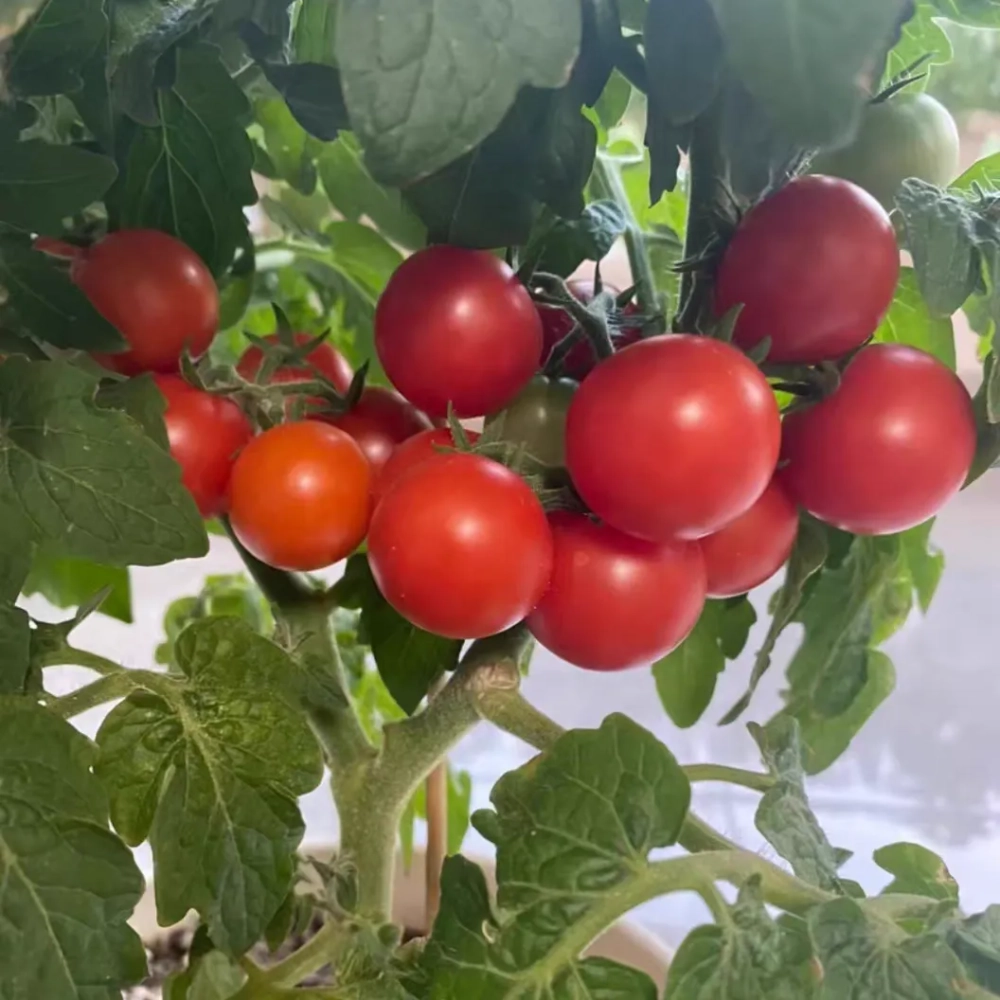The slow expansion and small size of homegrown tomato fruits are usually caused by multiple factors such as variety, nutrition, environment, and management. Today, let's discuss the causes and solutions, which can be easily mastered even by beginners!
### I. Causes
#### 1. Variety Issues
- Planting varieties that are not suitable for local climate and soil conditions, such as cultivating heat/humidity-sensitive varieties in high-temperature, rainy southern regions, or planting temperature-sensitive imported varieties in cold northern areas, which hinders fruit growth.
#### 2. Nutritional Imbalances
- **Excessive nitrogen fertilizer**: Causes plant overgrowth, with nutrients preferentially supplied to stems and leaves, leading to insufficient nutrients for fruit development.
- **Mineral deficiencies**:
- Calcium deficiency: Prone to blossom end rot and fruit cracking.
- Potassium deficiency: Results in small fruits with poor coloration.
- Boron deficiency: Affects pollen germination and pollination, directly inhibiting fruit expansion.
- **Soil problems**: Compacted or salinized soil reduces root vitality and nutrient absorption efficiency.
#### 3. Temperature Stress
- **High temperatures**: Daytime temperatures exceeding 35°C reduce photosynthetic enzyme activity, hindering organic matter synthesis; nighttime temperatures >20°C enhance respiration, consuming excessive nutrients.
- **Low temperatures**: Nighttime temperatures below 10°C weaken root absorption, stagnate plant growth, and slow fruit development.
#### 4. Insufficient Light
- Continuous rainy days or haze reduce light duration to less than 6 hours, impairing photosynthesis.
- Poor light transmission through greenhouse films, excessive planting density (row spacing <50cm×80cm), or dense foliage causes uneven light exposure.
#### 5. Cultivation Mismanagement
- **Excessive fruit retention per cluster**: Distributes nutrients unevenly, preventing full fruit development.
- **Neglected pruning**: Overgrown lateral branches and old leaves reduce ventilation and light, increasing pest/disease risks.
- **Improper watering**: Erratic soil moisture or flood irrigation causes root hypoxia, affecting nutrient transport.
#### 6. Pest and Disease Damage
- Diseases (early blight, gray mold) and pests (root-knot nematodes, whiteflies) damage plant health, disrupt vascular systems, and block nutrient transport.
### II. Solutions
#### 1. Optimal Variety Selection
- Southern regions: Choose heat-resistant, disease-resistant varieties.
- Northern regions: Choose cold-tolerant, transport/storage-resistant varieties.
#### 2. Scientific Fertilization
- **Seedling stage**: Use balanced water-soluble fertilizer to promote strong seedlings.
- **Fruit expansion stage**: Apply high-potassium water-soluble fertilizer + potassium dihydrogen phosphate weekly; spray calcium-magnesium-boron-zinc foliar fertilizer every 7–10 days, focusing on new leaves and fruits.
- Add beneficial microbial fertilizers (e.g., *Bacillus subtilis*, EM bacteria) to improve rhizosphere environment and nutrient uptake.
#### 3. Precise Temperature Control
- Daytime: Maintain 25–30°C; ventilate or use shade nets if exceeding 32°C.
- Nighttime: Keep 15–18°C; use thermal blankets or heating lamps in cold conditions.
#### 4. Refined Cultivation Management
- **Fruit thinning**: Retain 2–3 fruits per first cluster; remove the first cluster from weak seedlings to concentrate nutrients.
- **Pruning**: Adopt single/double-stem training; remove lateral branches and diseased leaves promptly.
- **Watering**: Follow "water when dry" principle; water small amounts frequently to avoid flood irrigation; water in early morning/evening during hot summers.
- **Soil management**: Cultivate soil 5–10 cm deep monthly to break compaction and promote root growth.
#### 5. Integrated Pest Management
- Spray protective fungicides regularly; hang yellow/blue sticky traps for pest control.
- Use high-efficiency, low-toxic pesticides as needed (e.g., phenamacril for early blight, imidacloprid for whiteflies), following label instructions strictly.
By mastering the above points, you can easily solve the problem of slow tomato fruit expansion! 🍅
What causes slow fruit expansion in tomatoes?

Share with
Tagged in :




Leave a Reply